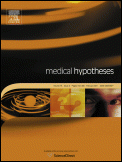Citation:

Abstract:
The mechanisms of cellular damage caused by infectious and inflammatory processes are complex and are still not fully understood. There is, however, a consensus that reactive oxygen species (ROS) generated by phagocytes migrating to injured tissues might be the main agents responsible for cellular damage in inflammatory processes. However, because both activated phagocytes and catalase-negative, peroxide-producing, toxigenic bacteria (Streptococci, Clostridiae) secrete a near-identical array of proinflammatory agonists, including reactive oxygen species (ROS), and because these microbial species might kill their targets by a synergism among several of their secreted enzymes (a multicomponent system), we postulated that activated phagocytes might also function in the same way. Using radiolabeled targets, in culture, we demonstrated that subtoxic amounts of a variety of oxidants (H2O2, radicals produced by xanthine-xanthine-oxidase, peroxyl radical, NO) acted synergistically with subtoxic amounts of a large series of membrane-perforating agents (microbial hemolysins, phospholipases, fatty acids, cationic proteins, proteinases, bile salts, the attack complex of complement, the xenobiotics, lindane, ethanol, methanol) to kill cells in culture and to release large amounts of arachidonic acid and metabolites. Membrane perforators might act primarily to overcome the potent antioxidant systems present in all mammalian cells and scavengers of ROS and inhibitors of the additional agonists might act to abolish the synergism among ROS and the membrane-damaging agents. It is also proposed that protection against tissue damage in vivo should also include 'cocktails' of appropriate antagonists. It is enigmatic that those publications which do describe both in-vitro and in-vivo models proposing that a synergism among a multiplicity of agonists might truly represent the mechanisms by which tissues are injured, in vivo, are hardly ever quoted in the current literature.Publication Global ID: http://europepmc.org/abstract/MED/9824842

